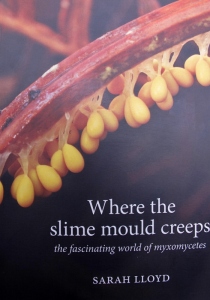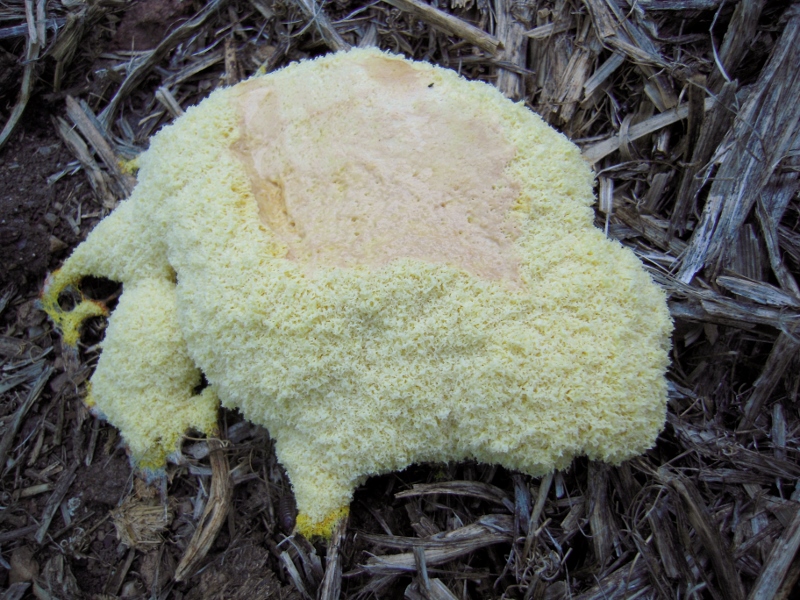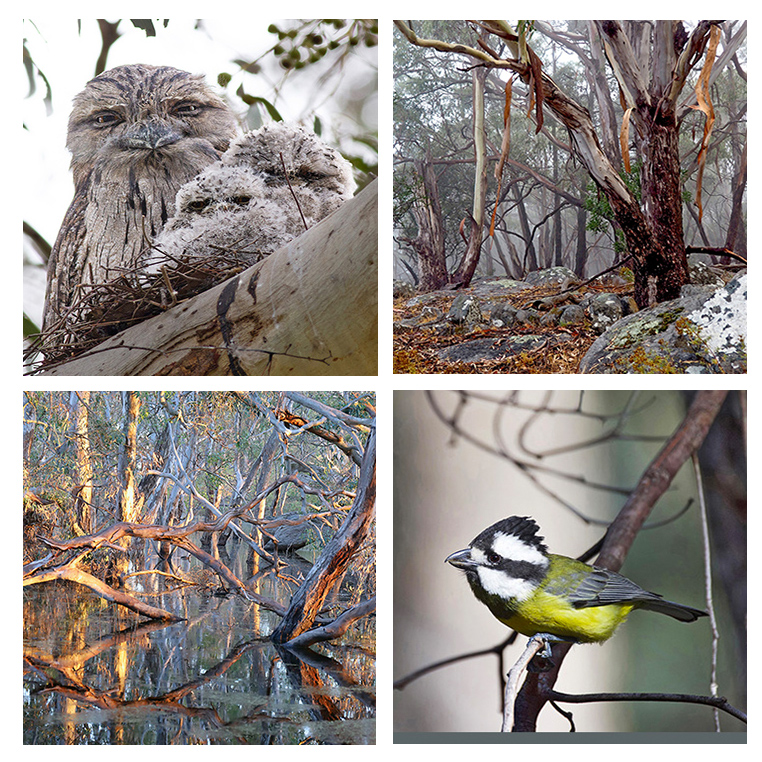It sounds like the scenario of a horror movie, but Sarah Lloyd’s, explanation of the world of myxomycetes–Where the slime mould creeps— is anything but. 
Slime moulds produce spores, like fungi, but they also share characteristics with animals: at one stage of their life they are single cell amoebae, and move about to feed. Lloyd’s book is beautifully written and generously illustrated with remarkable photos and diagrams. Although it’s based on her work as a naturalist around her property in Northern Tasmania, it’s definitely of interest generally. ‘Myxomycetes occur in every terrestrial ecosystem investigated so far, as well as in aquatic environments’. 45 species have been found in the Simpson desert.
Although the book is technically scrupulous, it’s not a fierce read. It even contains a cartoon–and, believe it or not, clear directions on how the text might be sung as a round, complete with musical notations!
The book costs $30.oo including postage. Contact <sarahlloyd@iprimus.com.au>

Fuligo septica in a Castlemaine garden, February 2012. ‘One of the most frequently encountered acellular slime moulds’, it rejoices in the common names of ‘scrambled eggs’, ‘dog’s vomit’,’demon’s droppings’ and ‘moon poo.’




 Click on image for info/order page
Click on image for info/order page Click on image for info/order page
Click on image for info/order page Click on image for info/order page
Click on image for info/order page





















